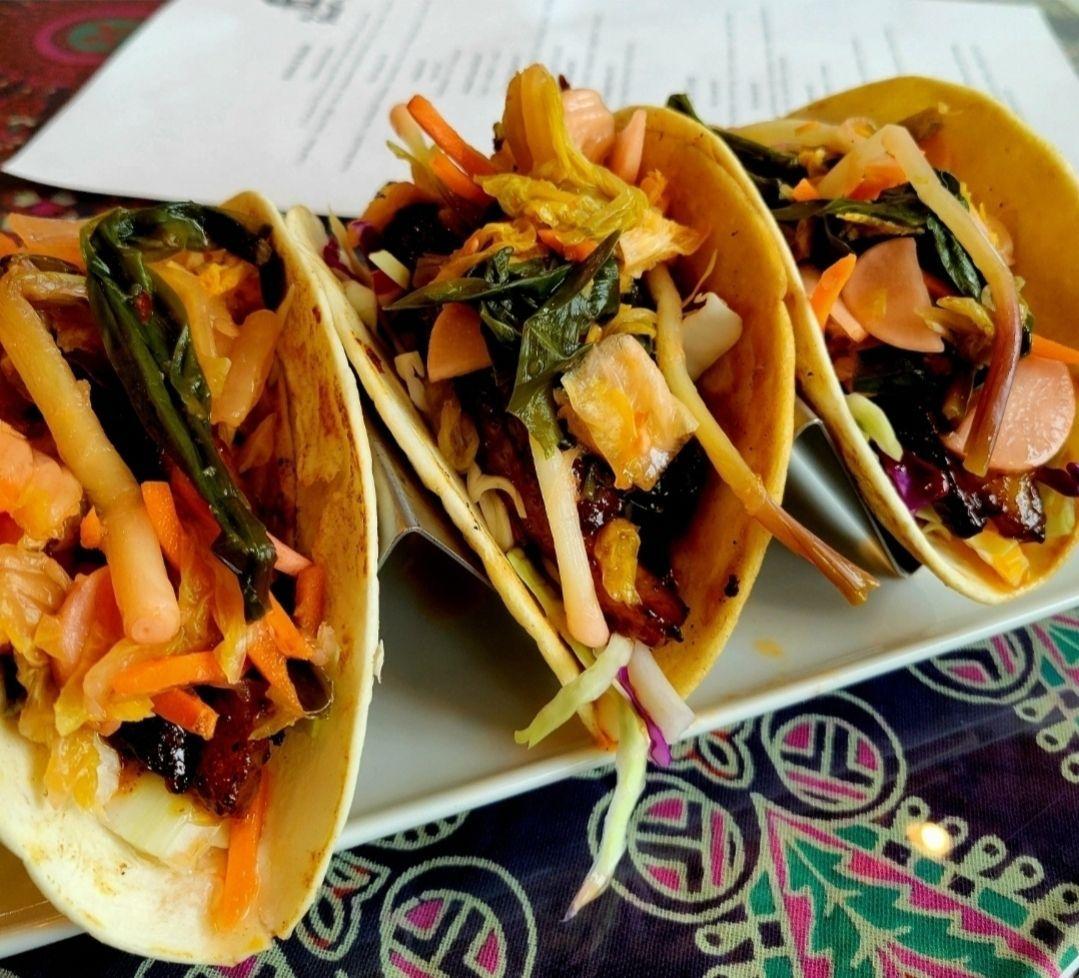Chef Elizabeth “Libby” Nolle is not a native of West Virginia. She was not raised on traditional Appalachian foods. And yet, today she’s passionate about native West Virginia foodstuffs and putting them to work in her kitchen.
Nolle, who was born and raised in Maryland, had her first taste of “spring tonic” when she was a college student at Davis and Elkins College in Elkins, WV.
“They have a ramp festival in late April—kind of like we always have ramp festivals in late April—and I had no idea what a ramp was at the time,” says Nolle. “I thought it was like skateboard ramps or highway ramps.”
It was during a cookoff at the festival that Nolle laid her taste buds on her first ramp, which was used as a filling in a ravioli. It led to an epiphany of sorts, including to her culinary career.

“That was when I was introduced to them and I was hooked on them. I loved them. That was also the time when I started really thinking about cooking professionally as well. So I just took them and ran,” says Nolle.
After years cooking at various locales in West Virginia, including in Richwood—the ramp capital of the world and home of the 84-year-old Feast of the Ramson—Nolle landed in nearby Summersville two years ago, where she’s the chef at Vault on Main and where she has found inventive uses for the native green.
“Because I’m not from West Virginia, I have a different perspective on ramps than a lot of people who were raised around them,” says Nolle.
While the typical Appalachian way to cook ramps may be to fry them with potatoes or put them on hamburgers, Nolle likes to also use ramps as ingredients. “So, in a dish where shallots or onions or garlic are called for, I’ll just take that out and add ramps in,” she explains.
Nolle has created a ramp beurre blanc recipe she loves, a ramp meatloaf recipe, and even her own take on a ramp ravioli. But hands down her favorite ramp recipe is ramp kimchi, which she serves slathered atop an unctuous pork-belly taco.
Here, Nolle shares her ramp kimchi recipe:
Ramp Kimchi
Recipe by Libby Nolle
Makes 1 quart
1 medium Napa cabbage about 2 pounds
¼ cup plus 1tb sea salt
6 cloves of garlic
1 tsp ginger
1 tsp sugar
2 TB Fish sauce
3 TB sambal oelek
8 once Daikon radish Julienne
2 carrots, peeled and Julienne
½ pound early ramps. If later in the season, cut off the tops
Directions
Cut the cabbage in half through the stem, cut each ½ in 1/4s then slice crosswise in 1-inch slices.
Put the cabbage in a large bowl. Sprinkle ¼ cup salt on the cabbage mix well, rubbing the salt into the cabbage. Then add enough water to cover the cabbage, cover, and set out at room temp for 2 hours.
While the cabbage is resting put the garlic, ginger, sambal oelek, fish sauce, and sugar in a food processor and blend to a paste.
Peel the carrots and Julienne (matchstick)
Chop the daikon radish Julienne (matchstick)
Clean the ramps under cool water removing the roots and all dirt and debris. If using late ramps, cut the tops off.
After the 2 hours drain and rinse the cabbage under cold water and let sit for 15 to 20 minutes.
Add all veggies in the cabbage bowl along with the spice paste. Mix well with your hands.
Pack kimchi into a quart jar, layering the salt 1 teaspoon at a time, and press firmly till the brine comes to the top and covers the veggies.
Cover, set in a bowl, and set in a cool dark place for 1 to 5 days, checking daily for flavor.

